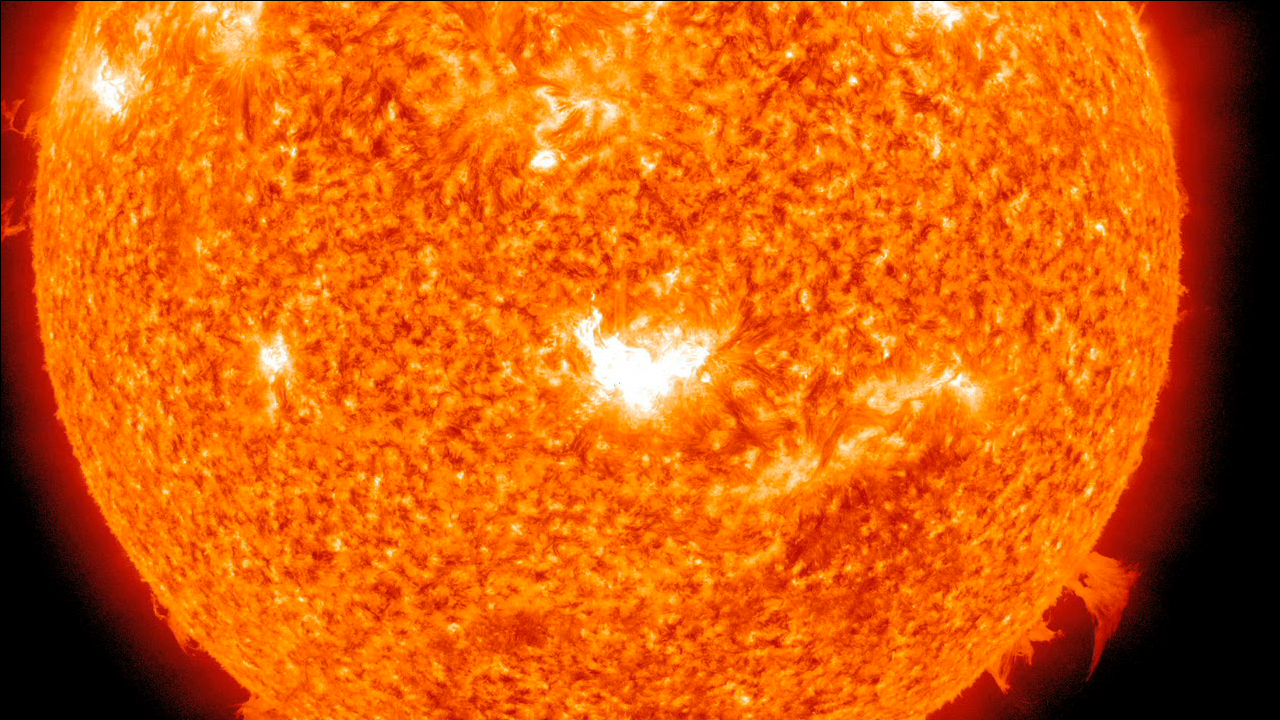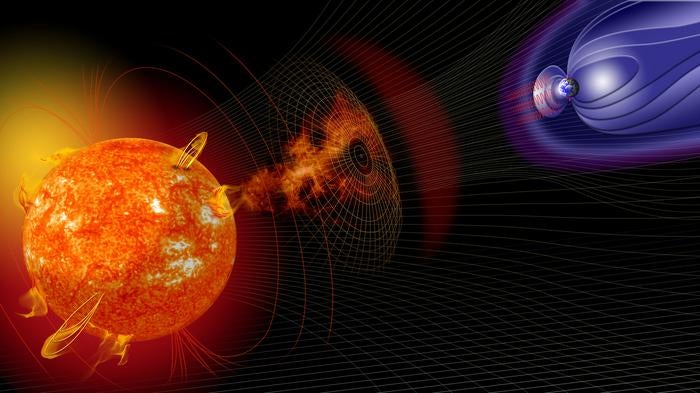Massive solar flare triggers blackout over Pacific
Disturbance from space weather event to Earth’s magnetic field could be strongest on Friday, experts say
Your support helps us to tell the story
From reproductive rights to climate change to Big Tech, The Independent is on the ground when the story is developing. Whether it's investigating the financials of Elon Musk's pro-Trump PAC or producing our latest documentary, 'The A Word', which shines a light on the American women fighting for reproductive rights, we know how important it is to parse out the facts from the messaging.
At such a critical moment in US history, we need reporters on the ground. Your donation allows us to keep sending journalists to speak to both sides of the story.
The Independent is trusted by Americans across the entire political spectrum. And unlike many other quality news outlets, we choose not to lock Americans out of our reporting and analysis with paywalls. We believe quality journalism should be available to everyone, paid for by those who can afford it.
Your support makes all the difference.A colossal solar flare, deemed the second-strongest of the year so far, led to a communications blackout over several parts of the Pacific, including Hawaii on Wednesday.
The strong X7 category flare erupted from a fast-growing sunspot labelled AR3842 on Monday, releasing powerful charged particles that headed towards Earth.
The eruption from the Sun caused a temporary radio blackout over Hawaii, according to SpaceWeather.com.
“An X7.1 (R3) solar flare erupted from Region 3842 this evening. This was the second strongest flare of Solar Cycle 25, only bested by an X8.7 flare on May 14th of this year,” the US National Oceanic and Atmospheric Administration said in a post on X.
Flares happen when the Sun’s magnetic field snaps and reconnects, often around sunspots, causing particles to be flung around into space like a massive catapult.
Solar flares are categorised by strength with the smallest ones labelled B-class, followed by C, M and X being the largest. Within each class, there is a finer scale represented by numbers usually from 1 to 9.
X-class flares are so strong that they can harm satellites and have the potential to cause worldwide blackouts.

The strong flare released on Monday could further cause a “minor-strong” disturbance of the Earth’s magnetic field, according to NOAA.
“G1-G3 (Minor-Strong) Geomagnetic Storm Watches have been issued for 03-05 October, due to the forecast arrival of the CME associated with the X7.1 flare observed on 02 October,” the American agency said.
The disturbance to Earth’s magnetic field is anticipated to be the strongest on Friday.
“NOAA forecasters are predicting a strong G3-class geomagnetic storm when the CME arrives as early as 4 October,” according to spaceweather.com.
The Sun is currently at the peak of its 11-year activity cycle in which the number of sunspots goes from very few per month to hundreds, and then back to very few.
During the Solar Maximum period, the release of flares, energetic particles, and plasma from the Sun all increase in frequency.
Flares tend to affect the Earth’s upper atmosphere almost immediately, with potentially adverse effects on communications and radio navigation systems like GPS.

Charged particles may arrive in about 20 minutes to several hours, and threaten the electronics of spacecraft and unprotected astronauts.
Plasma emerging from the Sun as Coronal Mass Ejection, or CME, arrives in 30-72 hours to set off changes in the Earth’s magnetic field, triggering auroras, and disrupting satellites as well as power transmission lines.
NOAA says the CME to arrive this week may cause manageable voltage fluctuations in power systems as well as likely aurora display as low as Pennsylvania to Iowa to Oregon.

Join our commenting forum
Join thought-provoking conversations, follow other Independent readers and see their replies
Comments